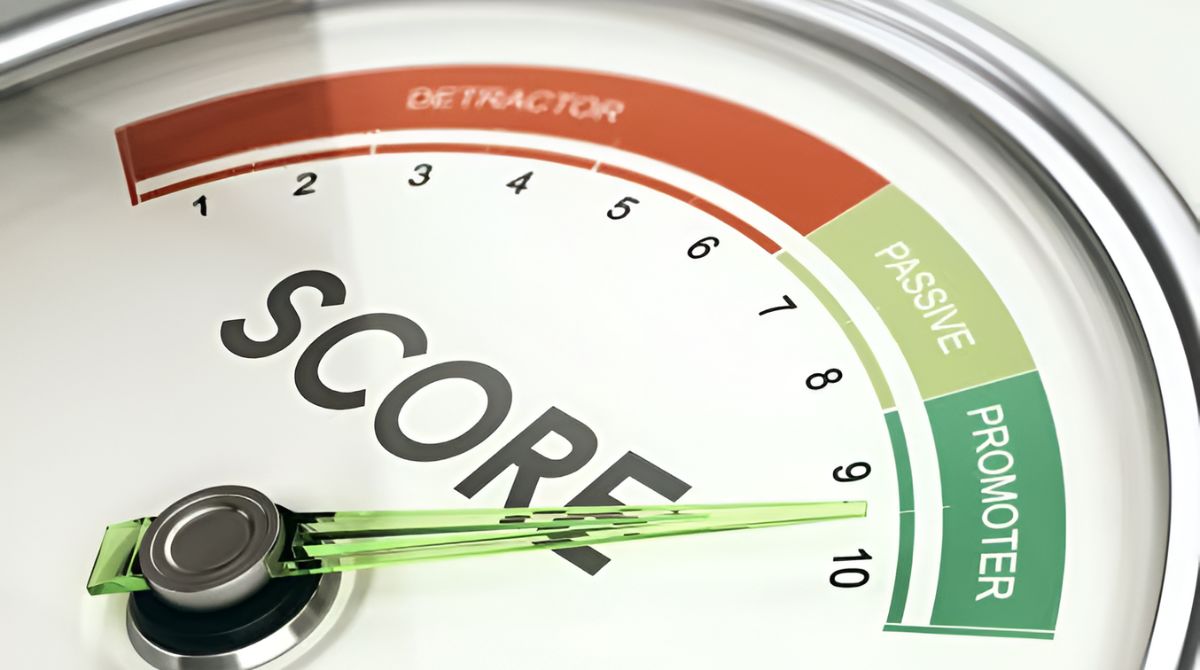Introduction
Welcome to the world of Software-as-a-Service (SaaS), where businesses are shifting towards subscription-based models to access software applications. In this competitive landscape, customer retention is crucial for the long-term success of SaaS companies. But what exactly is a retention rate and why is it important?
A retention rate is a metric that measures the percentage of customers who continue to use a product or service over a specific period of time. It provides insights into customer loyalty, satisfaction, and the overall health of a business. In the context of SaaS, a good retention rate indicates that customers are finding value in the software and are more likely to continue their subscription, contributing to stable and predictable revenue streams.
Why is retention rate important for SaaS companies? Well, acquiring new customers is undoubtedly important, but retaining existing customers is equally (if not more) critical. It costs significantly more to acquire a new customer than to retain an existing one. Furthermore, existing customers are more likely to upsell, cross-sell, and refer others to the SaaS product, thereby increasing the overall customer lifetime value (CLTV) and fostering business growth.
To understand why retention rate is essential, consider this: a high churn rate, which is the opposite of retention rate, can indicate that customers are dissatisfied with the SaaS product or are not realizing the expected value. This can lead to increased customer acquisition costs and a negative impact on the company’s brand reputation. On the other hand, a high retention rate suggests that customers are engaged, satisfied, and experiencing success with the SaaS product or service.
Factors that affect the retention rate include the quality and usefulness of the software, customer support and service, onboarding experience, competitive landscape, and pricing. By measuring and monitoring the retention rate, SaaS companies can identify areas that need improvement, proactively address customer concerns, and implement strategies to boost customer satisfaction and loyalty.
In the next sections, we will delve deeper into calculating retention rate, SaaS benchmarks, and what is considered a good retention rate for SaaS. So, buckle up and get ready to explore the fascinating world of SaaS retention rates!
What is a Retention Rate?
A retention rate is a key performance metric used to measure the percentage of customers or users who continue to use a product or service over a specific period of time. It is commonly used in various industries, including Software-as-a-Service (SaaS), to assess customer loyalty and the effectiveness of customer retention strategies.
In the context of SaaS, the retention rate provides valuable insights into the success of a company’s efforts to retain and engage customers on an ongoing basis. It shows how many customers are staying subscribed to the SaaS product and continuing to derive value from it. A high retention rate indicates that customers are satisfied, finding value, and are likely to renew their subscription, contributing to a stable revenue stream for the SaaS company.
Retention rate is typically measured over a specific time period, such as monthly or annually, and is expressed as a percentage. For example, a monthly retention rate of 90% means that 90% of customers who started the month using the SaaS product continued to use it throughout the month.
It’s important to note that retention rate is different from churn rate. While retention rate measures the percentage of customers who stay, churn rate represents the percentage of customers who leave or cancel their subscription within a specific period. Churn rate is calculated by subtracting the retention rate from 100%. For example, if the retention rate is 90%, the churn rate would be 10%.
Tracking retention rate can help SaaS companies quickly identify any issues or trends that may be impacting customer satisfaction and retention. It provides valuable feedback on the effectiveness of product features, customer support, onboarding processes, and overall user experience. By monitoring and analyzing retention rate, SaaS companies can make data-driven decisions to improve customer retention and reduce churn.
Calculating and understanding the retention rate is just the tip of the iceberg. In the next sections, we will explore why retention rate is important for SaaS companies, the factors that affect retention rate, and strategies to improve it. So, let’s dive deeper into the world of SaaS retention rates!
Why is Retention Rate Important for SaaS?
Retention rate holds immense importance for SaaS companies as it directly correlates with the long-term success and profitability of the business. Here are some key reasons why focusing on retention rate is vital in the SaaS industry:
1. Revenue Stability: Retained customers are a consistent source of revenue for SaaS companies. By maintaining a high retention rate, SaaS businesses can establish a predictable revenue stream, reducing the dependency on new customer acquisition and providing a solid foundation for growth.
2. Cost Savings: Acquiring new customers can be expensive, involving marketing, sales, and onboarding costs. Retaining existing customers is more cost-effective as it requires fewer resources and efforts. A high retention rate helps SaaS companies optimize their marketing and sales budgets and allocate resources more efficiently.
3. Customer Lifetime Value (CLTV): Retained customers have the potential to generate higher revenue over their lifetime compared to new customers. They are more likely to upgrade to higher-priced plans, purchase additional features, and refer others to the SaaS product. Increasing the CLTV through a high retention rate directly impacts the overall profitability of the business.
4. Brand Advocacy: Satisfied and loyal customers become brand advocates who share positive experiences and recommendations with others. By focusing on retention rate, SaaS companies can build a strong community of brand advocates who not only help acquire new customers but also contribute to the company’s reputation and organic growth.
5. Product Improvement: Monitoring retention rate provides valuable insights into customer satisfaction and product usability. It helps identify areas of improvement, understand customer needs and preferences, and make data-driven decisions for product enhancements. By addressing customer feedback and continuously improving the product, SaaS companies can increase customer satisfaction and retention.
6. Competitive Advantage: In a highly competitive SaaS landscape, a high retention rate sets a SaaS company apart from its competitors. It indicates that the company provides value, meets customer expectations, and prioritizes customer success. This can attract potential customers who are looking for a reliable and trustworthy solution with proven customer satisfaction.
By focusing on retention rate, SaaS companies can foster long-term relationships with customers, increase customer lifetime value, and position themselves for sustainable growth. In the next sections, we will explore the factors that affect retention rate and strategies to improve it. So, let’s continue our journey into the world of SaaS retention rates!
Factors Affecting Retention Rate
The retention rate of a SaaS company can be influenced by various factors that impact the overall customer experience and perception of value. Understanding these factors is crucial for identifying areas of improvement and implementing strategies to enhance retention. Here are some key factors that can affect the retention rate in the SaaS industry:
1. Product Quality and Usability: The quality and usability of the SaaS product itself play a significant role in customer retention. If the product is unreliable, difficult to use, or fails to meet customer expectations, it’s likely that customers will seek alternatives or cancel their subscription. Regular product improvements, bug fixes, and a user-friendly interface are essential for maintaining a high retention rate.
2. Customer Support and Service: Effective customer support and service are vital for customer satisfaction and retention. Promptly addressing customer inquiries, providing helpful resources, and offering personalized assistance can greatly enhance the overall customer experience. SaaS companies should invest in a knowledgeable support team and accessible support channels to ensure that customers receive timely assistance.
3. Onboarding and Training: Successful onboarding is crucial for customers to understand and derive value from the SaaS product. If the onboarding process is confusing or lacks proper guidance, customers may feel overwhelmed and struggle to utilize the software effectively. Offering comprehensive onboarding materials, tutorials, and training sessions can significantly improve customer onboarding and increase retention.
4. Competitive Landscape: The competitive landscape can impact the retention rate of a SaaS company. If competitors offer similar or superior features at a lower price, customers may be tempted to switch providers. SaaS companies need to stay aware of the competition and continuously innovate to stay ahead, offering unique value propositions that differentiate them from competitors.
5. Pricing and Value Perception: The pricing strategy and perceived value of the SaaS product have a direct influence on customer retention. Customers need to feel that they are getting their money’s worth and that the product delivers the promised benefits. A well-defined pricing structure, transparent pricing communication, and regular communication about product updates and improvements can help maintain a positive value perception.
6. Customer Engagement and Communication: Regular and meaningful communication with customers can foster engagement and loyalty. Sending targeted newsletters, product updates, and feature announcements can keep customers informed and provide ongoing value. By proactively engaging with customers, SaaS companies can build stronger relationships and reduce the likelihood of churn.
By analyzing and addressing these factors, SaaS companies can improve customer satisfaction, enhance the overall user experience, and increase the retention rate. In the next sections, we will explore how to calculate retention rate, benchmarks for SaaS retention rates, and what is considered a good retention rate for SaaS. So, let’s continue our journey into the world of SaaS retention rates!
How to Calculate Retention Rate
Calculating the retention rate is essential for tracking customer loyalty and assessing the effectiveness of customer retention strategies in the SaaS industry. The retention rate is typically measured as a percentage and can be calculated using the following formula:
Retention Rate = ((E – N) / S) x 100
In this formula, the variables represent the following:
- E: The number of customers at the end of a specific period (e.g., end of the month).
- N: The number of new customers acquired during that period.
- S: The number of customers at the start of that period.
Let’s illustrate the calculation with an example. Suppose a SaaS company starts the month with 500 customers (S), acquires 50 new customers (N) during the month, and ends the month with 450 customers (E). Using the formula, the retention rate would be calculated as follows:
((450 – 50) / 500) x 100 = 80%
Therefore, the retention rate for that month would be 80%.
It’s important to note that the time period over which the retention rate is calculated can vary depending on the specific requirements and goals of the SaaS company. Some companies measure retention rate monthly, while others may use an annual or longer time frame for their analysis.
Calculating retention rate on a regular basis allows SaaS companies to monitor changes in customer loyalty, identify trends, and take proactive measures to improve customer retention. It provides valuable insights into the overall health of the customer base and helps in making data-driven decisions to enhance customer satisfaction.
In the next sections, we will explore benchmarks for SaaS retention rates and what is considered a good retention rate for SaaS. So, let’s continue our journey into the world of SaaS retention rates!
Benchmarks for SaaS Retention Rate
Measuring the retention rate is not enough; SaaS companies need to determine how their retention rate compares to industry benchmarks to evaluate their performance and set realistic goals. While retention rates can vary based on factors such as the type of SaaS product, target market, and pricing model, here are some general benchmarks for SaaS retention rates:
- Excellent: A retention rate of 90% or higher is considered excellent. This indicates that the SaaS company has a strong customer base that consistently finds value in the product and renews their subscription.
- Good: A retention rate between 80% and 90% is considered good. This shows that the majority of customers are satisfied and staying with the SaaS product, though there is some room for improvement.
- Average: An average retention rate in the SaaS industry typically falls between 70% and 80%. This means that a significant portion of customers is churning, and there is a need to focus on customer retention strategies.
- Below Average: A retention rate below 70% indicates room for significant improvement. This could be a cause for concern as it may suggest that customers are not finding value in the product or facing challenges with the overall experience.
It’s important to note that these benchmarks are just general guidelines and may vary depending on the specific industry, niche, or stage of the SaaS company. Benchmarking against industry averages can help SaaS companies gain a better understanding of their performance relative to competitors and identify areas where they need to improve.
It’s worth mentioning that the goal should not be to simply meet industry benchmarks, but rather to continuously strive for improvement and exceed customer expectations. Every SaaS company has a unique customer base, product offering, and business model, and the retention rate benchmarks should be tailored to align with specific objectives and goals.
Regularly tracking and benchmarking the retention rate against industry standards provides valuable insights and helps SaaS companies evaluate the effectiveness of their customer retention strategies. It allows them to identify areas for improvement and take action to enhance customer satisfaction, reduce churn, and increase long-term customer loyalty.
In the next section, we will explore what is considered a good retention rate for SaaS and discuss strategies to improve retention rate. So, let’s continue our journey into the world of SaaS retention rates!
What is Considered a Good Retention Rate for SaaS?
When it comes to determining what constitutes a good retention rate for a SaaS company, there is no one-size-fits-all answer. The ideal retention rate can vary depending on factors such as the industry, target market, pricing strategy, and the company’s specific objectives. However, there are some general guidelines to consider:
1. Industry Standards: Comparing your retention rate to industry benchmarks can provide valuable insights. As mentioned earlier, a retention rate of 90% or higher is generally considered excellent, while rates between 80% and 90% are considered good. However, it’s crucial to remember that industry averages may differ across sectors, so it’s important to consider the specific context of your business.
2. Customer Acquisition Costs: The cost to acquire new customers is typically higher than retaining existing customers. Therefore, a good retention rate will help optimize customer acquisition costs, ensuring that the business remains profitable. If the costs of acquiring new customers outweigh the revenue generated, it may be a sign that the retention rate needs improvement.
3. Customer Lifetime Value (CLTV): A good retention rate should support a healthy customer lifetime value. Customers who stay with a SaaS company for an extended period are more likely to generate higher revenue through subscription renewals, additional purchases, or upgrades to higher-priced plans.
4. Business Goals and Growth: A good retention rate aligns with the long-term goals and growth plans of the SaaS company. If the company is focused on rapid expansion and market dominance, a higher retention rate may be required to achieve these objectives. However, if the company is targeting a niche market with a limited customer base, a slightly lower retention rate may still be considered good.
It’s important to note that the retention rate alone should not be the sole measure of success. It should be evaluated alongside other critical metrics, such as customer satisfaction, customer feedback, and customer lifetime value, to gain a comprehensive understanding of the overall customer experience and business performance.
Ultimately, a good retention rate for a SaaS company is one that reflects customer satisfaction, drives revenue stability, and supports the growth goals of the business. It’s essential for SaaS companies to continuously assess and improve their retention rate through customer-centric strategies, product enhancements, exceptional customer support, and effective communication.
In the next section, we will explore strategies to improve retention rate, so stay tuned as we continue our journey into the world of SaaS retention rates!
Strategies to Improve Retention Rate
Improving the retention rate is crucial for SaaS companies to establish long-term customer relationships, drive revenue stability, and foster business growth. Here are some effective strategies to enhance the retention rate:
1. Provide Exceptional Customer Support: Offering responsive and helpful customer support is key to improving retention. Provide multiple channels for customers to reach out, such as email, live chat, or phone support. Ensure that support agents are well-trained, empathetic, and knowledgeable, ensuring prompt and satisfactory resolutions to customer issues.
2. Optimize Onboarding and Training: Streamline the onboarding process to help customers quickly understand and derive value from the SaaS product. Provide comprehensive onboarding materials, tutorials, and interactive guides to ensure a smooth and successful onboarding experience. Regularly assess user feedback to identify areas of improvement and make necessary enhancements.
3. Engage and Communicate with Customers: Maintain regular communication with customers to keep them engaged and informed. Send personalized emails, newsletters, or product updates to share relevant information, tips, and best practices. Utilize in-app messages or push notifications to provide timely announcements, feature updates, and special offers.
4. Monitor Customer Success Metrics: Track customer success metrics, such as product usage data, feature adoption, and customer satisfaction surveys, to identify at-risk customers and proactively address their challenges or concerns. Utilize analytics tools to gain insights into customer behavior and usage patterns, enabling you to offer personalized recommendations and targeted upsell opportunities.
5. Offer Incentives and Loyalty Programs: Implement loyalty programs, referral programs, or exclusive discounts for long-term customers to incentivize their continued subscription and encourage them to advocate for your SaaS product. Rewarding loyal customers promotes brand loyalty and fosters a sense of community, increasing the likelihood of retention.
6. Continuously Improve your Product: Regularly enhance your product based on customer feedback and evolving market needs. Solicit feedback through surveys, user testing, or feedback loops and prioritize feature requests based on customer demand. By consistently delivering value and addressing customer pain points, you can encourage higher customer satisfaction and retention.
7. Build Strong Customer Relationships: Develop personal connections with your customers. Engage with them on social media, respond to their comments and inquiries, and seek their opinions during product development. Show genuine interest in their success and go the extra mile to build trust and loyalty, which can significantly impact retention rates.
By implementing these strategies, SaaS companies can provide an exceptional customer experience, enhance customer satisfaction, and increase the likelihood of long-term retention. Each company should tailor these strategies according to their specific business model, target market, and customer preferences.
Now that we have explored the strategies to improve retention rate, let’s wrap up our journey into the world of SaaS retention rates.
Conclusion
Retention rate plays a vital role in the success and growth of SaaS companies. It measures the percentage of customers who continue to use a product or service over time and reflects their satisfaction and loyalty. Understanding and improving the retention rate is essential for maintaining a stable revenue stream, optimizing customer acquisition costs, and increasing customer lifetime value.
In this article, we explored what retention rate is and why it is crucial for SaaS companies. We discussed the factors that can impact retention rate, such as product quality, customer support, onboarding experience, competitive landscape, and pricing. We also learned how to calculate retention rate using a simple formula based on the number of customers at the start and end of a specific period.
We delved into the benchmarks for SaaS retention rates, which provide a context for evaluating performance and setting realistic goals. While industry averages can serve as a reference point, it’s essential to consider individual business goals, customer base, and market dynamics when assessing retention rate performance.
Furthermore, we explored strategies to improve retention rate, including providing exceptional customer support, optimizing onboarding and training, engaging and communicating with customers, monitoring customer success metrics, offering incentives and loyalty programs, and continuously improving the product. By implementing these strategies, SaaS companies can enhance customer satisfaction, foster customer relationships, and increase retention rates.
To succeed in the highly competitive SaaS landscape, businesses must prioritize customer retention as much as customer acquisition. By focusing on improving the retention rate, SaaS companies can build a loyal customer base, drive revenue stability, and position themselves for long-term success.
So, now that you have gained insights into retention rates and strategies, it’s time to implement them and embark on a journey of increased customer satisfaction, loyalty, and business growth!

























